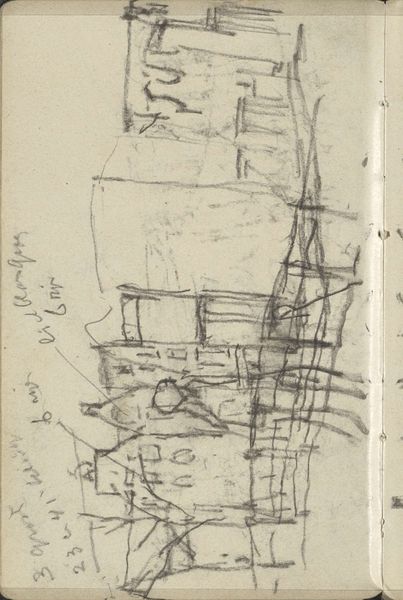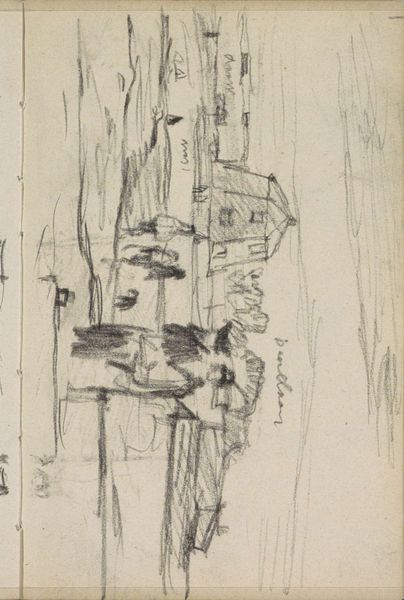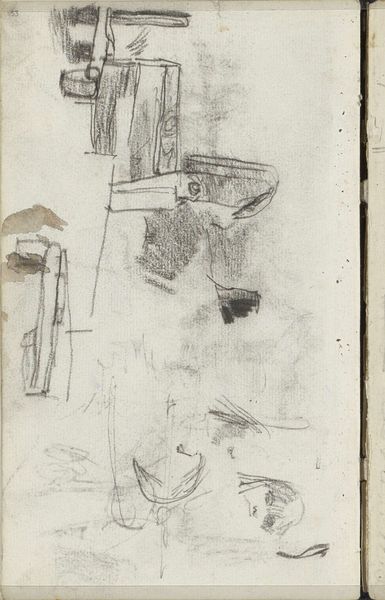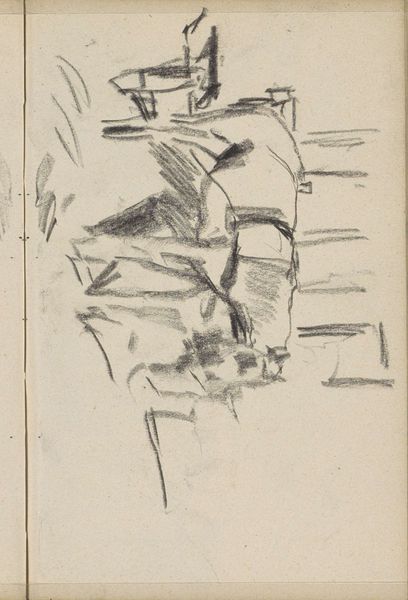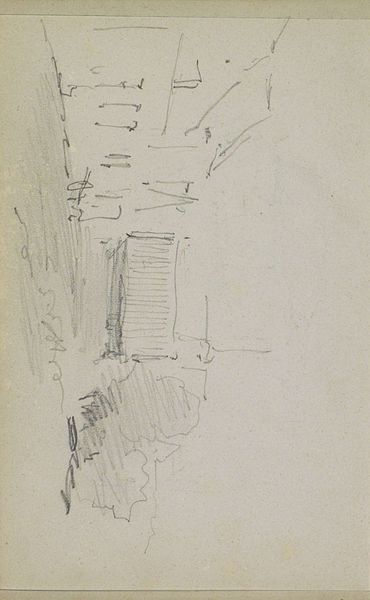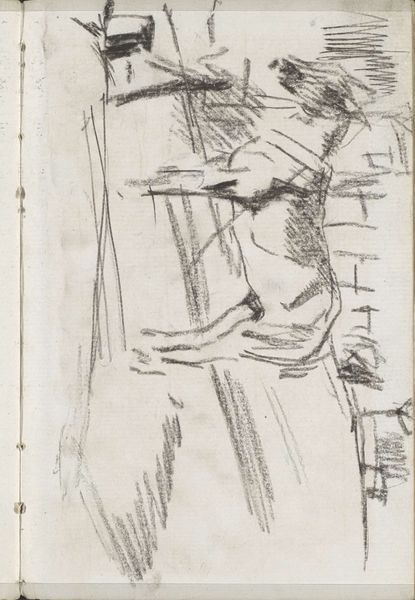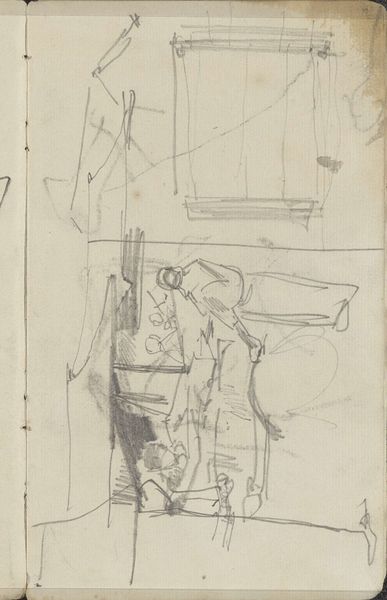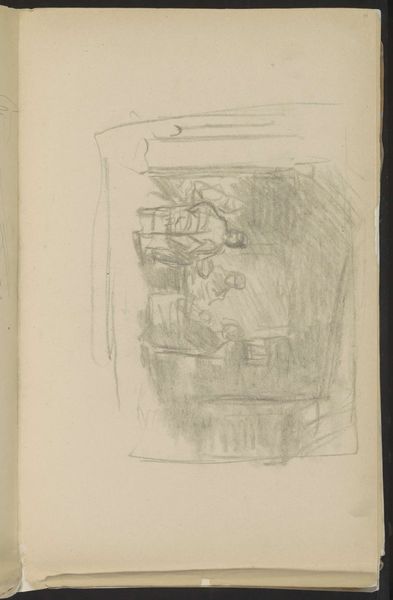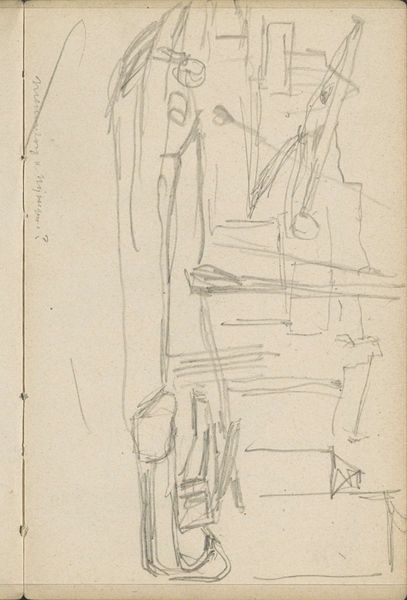
drawing, paper, pencil
#
drawing
#
amateur sketch
#
quirky sketch
#
pencil sketch
#
incomplete sketchy
#
landscape
#
paper
#
personal sketchbook
#
idea generation sketch
#
pen-ink sketch
#
pencil
#
sketchbook drawing
#
sketchbook art
#
realism
#
initial sketch
Copyright: Rijks Museum: Open Domain
Editor: This drawing, "Figuren op een zeilboot," or Figures on a Sailboat, by Johan Hendrik Weissenbruch, dates from 1834 to 1903. It’s rendered in pencil on paper. I'm struck by its almost ephemeral quality, a fleeting impression captured in sketchy lines. What’s your perspective on this work? Curator: This preliminary sketch is interesting from a materialist perspective. It shows us the artist's process – the raw, unrefined labor behind a potentially larger work. Weissenbruch uses readily available and inexpensive materials: pencil and paper. Consider the social context: sketching was a common practice, a form of visual note-taking accessible to many artists regardless of their economic status. Editor: So, it’s about democratizing art-making? Curator: In a way, yes. It challenges the notion of art as precious object. It highlights the value of the everyday and the accessibility of artistic creation. The "incomplete sketchy" nature you observed isn’t a failing; it’s a testament to the iterative process, a rejection of the expectation of polished, finished artwork from the outset. How does seeing it this way change your interpretation? Editor: It shifts my focus from aesthetic appreciation to considering the actions and materials that brought it into being. It wasn’t just about creating a pretty picture, but more about working through ideas. So it shows the real activity and economics of art. Curator: Exactly. By considering the materials, process, and potential social context of this “amateur sketch”, we gain a more complete understanding of artistic creation and consumption beyond simply a ‘sailboat’. Editor: I see what you mean. I hadn't considered how even a quick sketch reveals so much about art making and its place in the world!
Comments
No comments
Be the first to comment and join the conversation on the ultimate creative platform.

